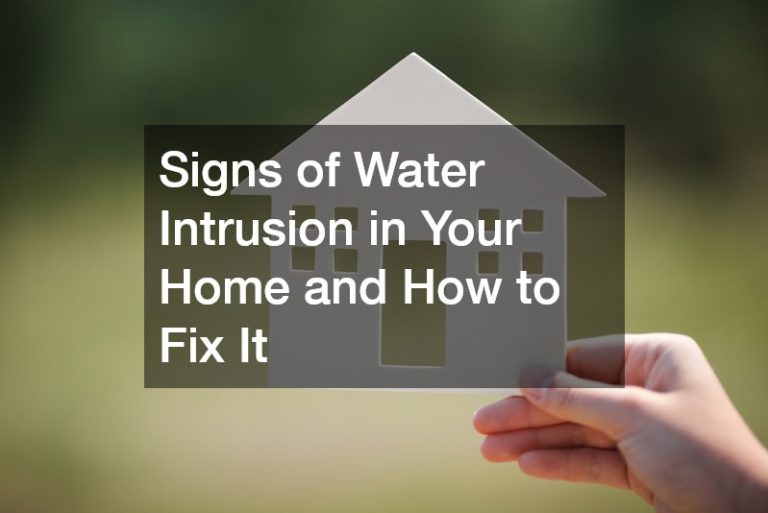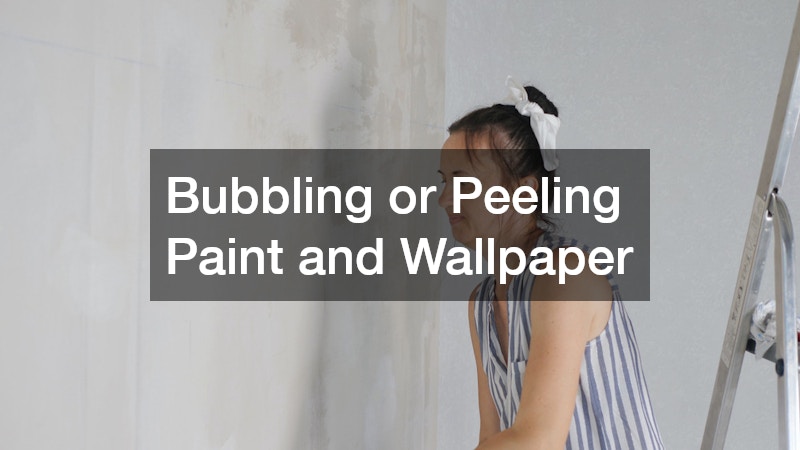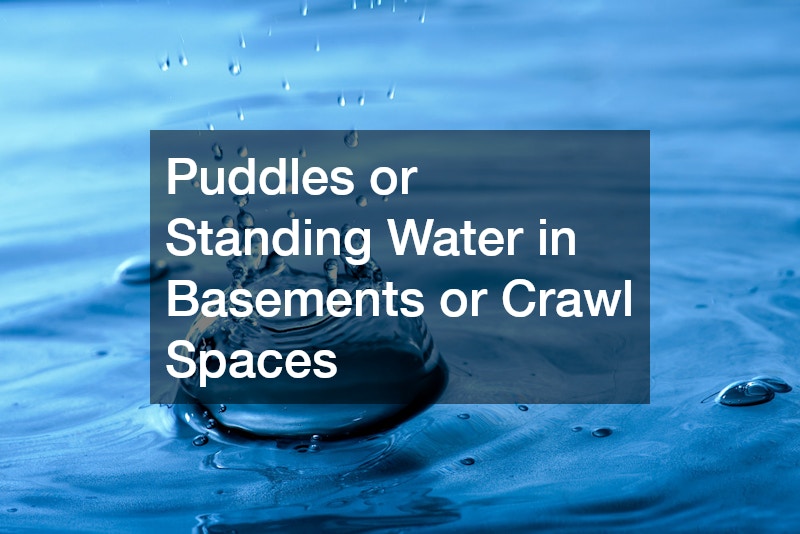
Water is essential to daily life, but when it makes its way into areas of your home where it doesn’t belong, it can become a major threat. What begins as a minor leak or damp spot can quickly escalate into serious structural problems, mold growth, or damage to your belongings. Understanding the early signs of water intrusion is essential for homeowners who want to protect their property and avoid expensive repairs.
While the causes of water intrusion vary—from poor drainage and aging plumbing to extreme weather—early detection remains your best line of defense. Once you identify an issue, acting quickly is critical. With the right repair methods and a trusted professional team, you can address the problem before it worsens and ensure your home stays dry, healthy, and structurally sound. This guide will walk you through the most common signs of water intrusion, how to assess the damage, and the steps you can take to fix it effectively.
Musty Odors and Damp Smells
One of the earliest and most overlooked signs of water intrusion is a musty, damp smell in the air. Often described as “earthy” or “mildewy,” this scent usually indicates mold or mildew growth—common byproducts of excess moisture. You might notice it in basements, crawl spaces, closets, or even living rooms where hidden leaks are present.
These odors tend to linger even after cleaning, signaling a recurring or ongoing moisture problem. While air fresheners and dehumidifiers may temporarily mask the scent, the root issue needs professional assessment and repair. In many cases, homeowners who encounter musty odors end up seeking help from water damage companies to trace and mitigate the source.
Sometimes the smell originates from areas with aging infrastructure, such as old water heaters that may be slowly leaking. It’s not uncommon for such appliances to contribute to a persistent moisture issue when placed in low-ventilation spaces. Early action, including inspections and possible water heater repair, is essential to preventing long-term damage.
Discoloration or Staining on Walls and Ceilings
If you spot brown, yellow, or rust-colored stains on your walls or ceilings, don’t ignore them—they’re some of the most visible signs of water intrusion. These stains typically appear as irregular blotches and may darken over time as more moisture seeps through. Often, they indicate a leaky roof, a burst pipe, or condensation buildup.
In multi-level homes, water from an upstairs bathroom or laundry room can travel downward and pool in the ceiling of the floor below. This leads to unsightly damage and weakens the drywall or plaster. In these cases, addressing the underlying leak usually requires the expertise of a plumbing company or a roofer, depending on the water’s point of entry.
It’s important not just to repaint the stained area and call it a day. Without proper water mitigation, the moisture trapped inside the walls can continue to spread, leading to structural rot and mold. The moment you notice staining, it’s time to contact a professional to perform a full evaluation.
Bubbling or Peeling Paint and Wallpaper
When paint or wallpaper starts to bubble, crack, or peel, it’s often because of moisture lurking beneath the surface. Water causes materials to lose adhesion, resulting in visible changes to texture and appearance. If ignored, this can lead to warped walls and costly repairs.
This issue can be particularly deceptive. A small bubble might not seem serious at first, but it can indicate a much larger water intrusion problem behind the wall. Some homeowners peel back a small area to find widespread mold or evidence of long-standing leakage. That’s when a call to a water restoration service becomes more than necessary—it’s urgent.
This type of damage can be tied to multiple sources: leaking pipes, condensation near HVAC systems, or failing caulk and grout in bathrooms. Even improperly sealed windows can allow rainwater to trickle behind the interior finish. Ensuring all seals are intact and moisture levels are controlled is key to keeping your walls intact and your home healthy.
Mold Growth in Unexpected Places
Mold thrives in moist, dark environments, so its presence often signifies a more severe water issue. While mold is sometimes visible on bathroom tiles or around sinks, it becomes more concerning when it shows up on walls, ceilings, carpets, or baseboards.
Mold growth in corners of rooms or beneath furniture can be one of the clearest signs of water intrusion in hidden areas. It can spread rapidly, releasing spores that irritate allergies and cause respiratory problems. Beyond health concerns, mold also compromises building materials and can lower your property value.
In cases like these, professional help is non-negotiable. Specialized water mitigation services not only remove the mold but address the moisture that caused it in the first place. Homeowners should also consider preventative measures such as improved ventilation and waterproofing materials, especially in moisture-prone areas like bathrooms and basements.
Warped Floors and Buckling Wood
Water has a dramatic impact on flooring—especially materials like hardwood, laminate, and engineered wood. When moisture seeps underneath, it can cause the floorboards to warp, swell, or even detach from the subfloor. This may begin subtly, with a soft spot or creak, but over time, the issue becomes highly visible.
Buckling or lifting flooring isn’t just a cosmetic concern. It creates trip hazards and can signal deeper structural problems. For instance, prolonged exposure to moisture might mean the joists beneath the floor are also compromised. You’ll need more than a flooring contractor—you’ll need a full inspection by specialists who deal with hidden water damage.
Depending on the source of the water, the fix may involve replacing plumbing connections, improving drainage, or even exploring basement waterproofing companies if the issue stems from below ground. Repairing the surface without addressing the root will only lead to repeat problems.
Visible Cracks in Foundation or Exterior Walls
While small hairline cracks in foundations are common due to settling, larger or expanding cracks may indicate ongoing water intrusion. Water pressure from saturated soil can push against your foundation, especially during heavy rains or seasonal thaws, forcing water into your home.
If your home is built on a slope or near a body of water, it may be more vulnerable to hydrostatic pressure. Over time, this can lead to bowing walls, foundation leaks, and even structural shifting. Any signs of movement, crumbling, or water trails near foundation cracks should be taken seriously.
To protect your home long term, consult professionals experienced in structural repair and water intrusion. In some cases, you may even need a water and sediment test to evaluate how surrounding soil interacts with water. From there, a plan involving trench drains, sump pumps, or exterior grading can be implemented to safeguard your home’s foundation.
Puddles or Standing Water in Basements or Crawl Spaces
Basements and crawl spaces are highly susceptible to water intrusion, and standing water is a surefire red flag. Even small puddles can cause major problems over time—encouraging mold growth, inviting pests, and weakening concrete and wooden structures.
These areas often go unnoticed until the issue becomes severe. Routine inspections, especially after storms or snowmelt, can help identify pooling water early. If you find water consistently accumulating, you may need drainage solutions such as French drains, sump pumps, or exterior sealing.
Basement waterproofing companies specialize in creating moisture barriers and improving water flow around your home’s perimeter. These services often involve installing vapor barriers, sealing cracks, and integrating pump systems that automatically remove water before it causes damage. Investing in professional waterproofing is a smart step toward long-term peace of mind.
Increased Humidity and Condensation
If your home consistently feels humid or you frequently notice condensation on windows, it could be a symptom of water intrusion. High humidity often points to excess moisture in the air, which can result from hidden leaks, poor ventilation, or inadequate insulation.
Condensation around windows may seem harmless, but over time it leads to rot in wood frames, mold growth, and even damage to drywall. In bathrooms and kitchens, excess moisture can create problems in cabinetry, paint, and fixtures, requiring regular repairs or replacements.
A dehumidifier can help control moisture levels temporarily, but a thorough assessment is needed to find the root cause. Homes that rely on well water should also consider a water and sediment test to check for mineral buildup or organic matter that may affect appliances and surfaces. Controlling humidity is a key component of any comprehensive water mitigation strategy.
Decreased Water Pressure or Sudden Spikes in Utility Bills
If you’ve recently noticed that your water pressure is lower than usual or your water bill has unexpectedly spiked, you might be dealing with a hidden leak. Underground or in-wall pipe leaks can waste thousands of gallons of water without any visible symptoms.
In these cases, it’s essential to call a reputable plumbing company. With modern tools like thermal imaging, acoustic sensors, and pressure gauges, plumbers can locate leaks with minimal disruption. In older homes, leaks may originate from corroded pipes, aging connectors, or sediment buildup that restricts flow.
Fixing hidden leaks isn’t just about reducing your bills—it’s about preventing structural damage, mold, and further deterioration of essential systems. Don’t delay if your water usage seems unusually high or your plumbing isn’t functioning as it used to.
Flooding After Heavy Rain or Melting Snow
Seasonal weather patterns can expose underlying weaknesses in your home’s waterproofing. If your basement or garage floods during heavy rain or spring thaw, you’re likely experiencing chronic water intrusion. The more often it happens, the more damage accumulates behind walls, beneath floors, and within insulation.
In addition to waterproofing materials, you may need to reevaluate your home’s exterior drainage setup. Downspouts should extend away from the foundation, and gutters should be cleaned regularly to prevent overflow. Landscaping adjustments, such as sloping soil away from the house, can also reduce the risk of future flooding.
For homes in rural or off-grid locations, considering professional water well drilling may provide an opportunity to control water sources more effectively. By ensuring proper well placement and installing smart water control systems, you can avoid surface water runoff issues and reduce pressure on your home’s foundation.
Corrosion Around Fixtures and Appliances
Corrosion or rust around plumbing fixtures, pipes, or appliances like water heaters can indicate prolonged exposure to moisture. This is one of the subtler signs of water intrusion but one that deserves close attention. Over time, even minor corrosion can lead to leaks, inefficiency, and eventual failure.
Water heaters, in particular, should be inspected annually. If you notice rust-colored water, puddling around the base, or inconsistent heating, it may be time for water heater repair or replacement. Many homeowners assume tank failure happens suddenly, but the warning signs often appear months in advance.
Regular inspections, flushing the tank, and installing water alarms near vulnerable appliances can go a long way in preventing major water damage. Don’t wait until a unit fails completely—most water damage companies report that a significant percentage of their emergency calls stem from neglected appliances. This is one of the things to look for when assessing signs of water intrusion.
Peeling Laminate and Damaged Cabinetry
In kitchens, bathrooms, and laundry rooms, cabinetry is often the first material to reveal signs of water problems. Peeling laminate, swelling doors, or soft particle board are signs that moisture has been at work behind the scenes.
While spills and minor leaks can be managed with quick cleanup, recurring damage indicates a deeper issue. Look beneath sinks, behind appliances, and around plumbing connections for signs of persistent dampness. In homes where cabinets sit near dishwashers or washers, hidden leaks can wreak havoc for months before anyone notices.
Replacing affected cabinetry without correcting the source of water is a waste of money. Coordinate with a contractor or water restoration service to investigate the problem thoroughly and perform lasting repairs. Once the leak is addressed, improved seals and waterproofing materials can protect cabinetry going forward.
Water intrusion may start small, but it rarely stays that way. The moment you notice any of these telltale signs—be it staining, musty smells, mold, or buckling floors—it’s crucial to take action. Ignoring the problem allows moisture to fester, potentially leading to mold growth, wood rot, and costly repairs.
The most effective approach is twofold: identify the problem early and fix it correctly. Whether that involves calling a plumbing company, seeking help from water restoration service professionals, or hiring basement waterproofing companies, acting promptly can save you time, money, and stress.
Remember, moisture problems often signal deeper issues that can’t be resolved with surface-level fixes. From checking aging water heaters to considering water well drilling for better control over your property’s runoff, your ability to protect your home lies in being proactive and noticing signs of water intrusion. By learning the signs of water intrusion and addressing them head-on, you can safeguard your home’s value and your family’s health for years to come.




